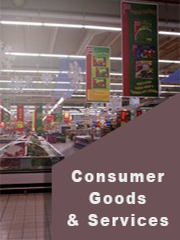Report overview
Baby food packaging products are specially designed for packaging food material for infants and toddlers. A wide variety of packaging materials such as glass jars, plastic containers, metal cans, folding cartons, and flexible packaging are used for packaging baby food products, including dried foods, prepared foods, and milk formula.
This report aims to provide a comprehensive presentation of the global market for Baby Food Packaging, with both quantitative and qualitative analysis, to help readers develop business/growth strategies, assess the market competitive situation, analyze their position in the current marketplace, and make informed business decisions regarding Baby Food Packaging. This report contains market size and forecasts of Baby Food Packaging in global, including the following market information:
Global Baby Food Packaging Market Revenue, 2018-2023, 2024-2032, ($ millions)
Global Baby Food Packaging Market Sales, 2018-2023, 2024-2032, (K Units)
Global top five Baby Food Packaging companies in 2022 (%)
The global Baby Food Packaging market was valued at US$ 46500 million in 2022 and is projected to reach US$ 67320 million by 2029, at a CAGR of 5.4% during the forecast period. The influence of COVID-19 and the Russia-Ukraine War were considered while estimating market sizes.
The increasing demand for baby food maker drives the market. High birth rate, increasing consumer awareness, and increasing number of working women are the factors driving the demand for baby food packaging solutions. The growing consumer preference for eco-friendly pouch packaging has increased the adoption for flexible packaging. Another factor augmenting the need for packaging solutions is the innovation led by baby food manufacturers, to meet varying consumer needs. Companies are increasingly using sustainable and recyclable packaging materials. They are constantly looking for green, innovative, and recyclable alternatives of normal packaging. Rapid urbanization coupled with increasing hectic lifestyle is expected to drive the product demand in economies such as the U.S., India, Brazil, and Vietnam. Increased disposable income coupled with rising demand for milk products is also expected to drive the food packaging demand over the forecast period.
MARKET MONITOR GLOBAL, INC (MMG) has surveyed the Baby Food Packaging manufacturers, suppliers, distributors and industry experts on this industry, involving the sales, revenue, demand, price change, product type, recent development and plan, industry trends, drivers, challenges, obstacles, and potential risks.
Total Market by Segment:
Global Baby Food Packaging Market, by Type, 2018-2023, 2024-2032 ($ Millions) & (K Units)
Global Baby Food Packaging Market Segment Percentages, by Type, 2022 (%)
Glass Jars
Plastic Containers
Metal Cans
Folding Cartons
Flexible Packaging
Others
Global Baby Food Packaging Market, by Application, 2018-2023, 2024-2032 ($ Millions) & (K Units)
Global Baby Food Packaging Market Segment Percentages, by Application, 2022 (%)
Milk Formula
Prepared Baby Food
Dried Baby Food
Others
Global Baby Food Packaging Market, By Region and Country, 2018-2023, 2024-2032 ($ Millions) & (K Units)
Global Baby Food Packaging Market Segment Percentages, By Region and Country, 2022 (%)
North America
US
Canada
Mexico
Europe
Germany
France
U.K.
Italy
Russia
Nordic Countries
Benelux
Rest of Europe
Asia
China
Japan
South Korea
Southeast Asia
India
Rest of Asia
South America
Brazil
Argentina
Rest of South America
Middle East & Africa
Turkey
Israel
Saudi Arabia
UAE
Rest of Middle East & Africa
Competitor Analysis
The report also provides analysis of leading market participants including:
Key companies Baby Food Packaging revenues in global market, 2018-2023 (Estimated), ($ millions)
Key companies Baby Food Packaging revenues share in global market, 2022 (%)
Key companies Baby Food Packaging sales in global market, 2018-2023 (Estimated), (K Units)
Key companies Baby Food Packaging sales share in global market, 2022 (%)
Further, the report presents profiles of competitors in the market, key players include:
Bericap
Du Pont
Cascades
Nestle
Tommee Tippee
Amcor
Winpak
AptarGroup
Sonoco
Tetra Laval
Outline of Major Chapters:
Chapter 1: Introduces the definition of Baby Food Packaging, market overview.
Chapter 2: Global Baby Food Packaging market size in revenue and volume.
Chapter 3: Detailed analysis of Baby Food Packaging manufacturers competitive landscape, price, sales and revenue market share, latest development plan, merger, and acquisition information, etc.
Chapter 4: Provides the analysis of various market segments by type, covering the market size and development potential of each market segment, to help readers find the blue ocean market in different market segments.
Chapter 5: Provides the analysis of various market segments by application, covering the market size and development potential of each market segment, to help readers find the blue ocean market in different downstream markets.
Chapter 6: Sales of Baby Food Packaging in regional level and country level. It provides a quantitative analysis of the market size and development potential of each region and its main countries and introduces the market development, future development prospects, market space of each country in the world.
Chapter 7: Provides profiles of key players, introducing the basic situation of the main companies in the market in detail, including product sales, revenue, price, gross margin, product introduction, recent development, etc.
Chapter 8: Global Baby Food Packaging capacity by region & country.
Chapter 9: Introduces the market dynamics, latest developments of the market, the driving factors and restrictive factors of the market, the challenges and risks faced by manufacturers in the industry, and the analysis of relevant policies in the industry.
Chapter 10: Analysis of industrial chain, including the upstream and downstream of the industry.
Chapter 11: The main points and conclusions of the report.
